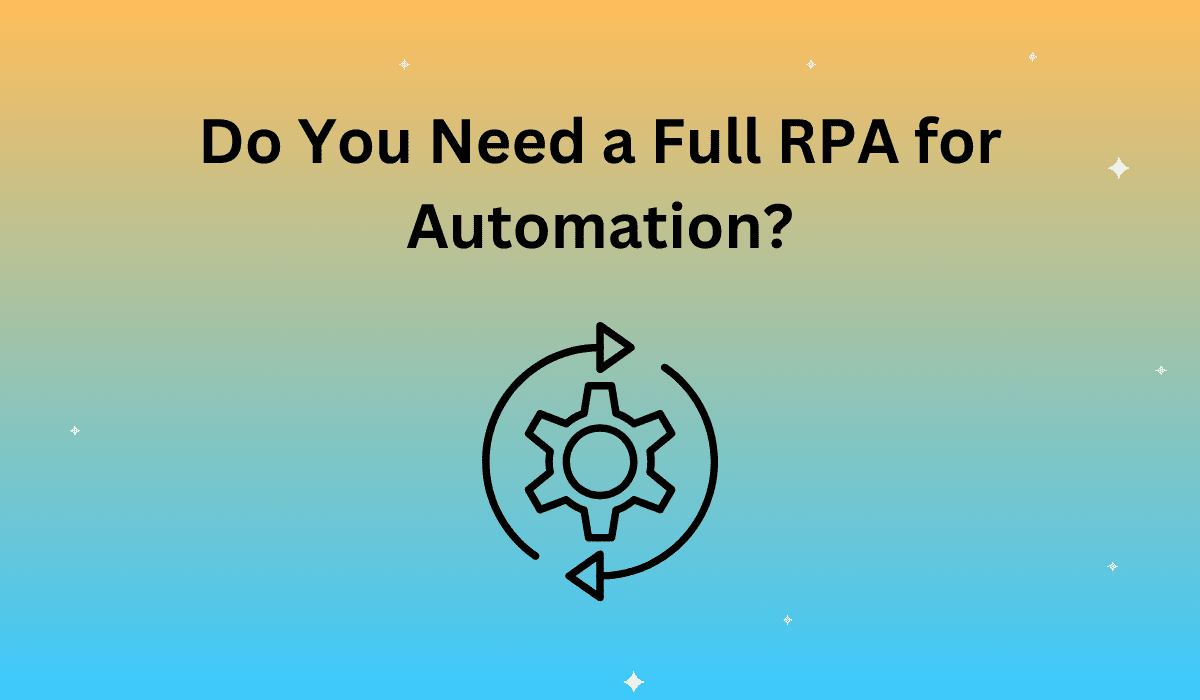Anyone who has ever needed to work on spreadsheets is thankful for automation. Nothing is as dull as copying and pasting information a thousand times. Businesses today use automation for everything from payroll to report generation, and they often turn to a robotic process automation (RPA) system to help.
RPAs are versatile, valuable tools that allow you to create a set of instructions that a bot can perform. They can imitate most human interfaces with machines and can control anything from Microsoft Excel to a robotic arm in a factory. They can free up employees to spend time on more strategic tasks requiring human intelligence.
While most businesses can benefit from a degree of RPA functionality, do you need a complete RPA solution for your company? Let’s look at some functions you might be interested in, whether you run a factory or an organization full of Office 365 users.
RPA Features to Look For
- While your systems utilize various operating systems, you probably use Windows to interface with most. Windows compatibility is the most useful requirement in RPA functionality, as that gives you access to a wide variety of other systems.
- You also want a highly scalable automation solution. You should have a multithread capability to run multiple user journeys and applications simultaneously. The more time you can save, the more valuable it is, and you should be able to deploy the automation across your systems wherever necessary.
- Image-based user interface interaction helps you simulate mouse movements and clicks without relying on 100% accurate x and y coordinates, creating a more authentic user experience.
- Debugging is a must for effective application development. A solution should have packet capture abilities that provide low-level network scraping capability, ideally producing PCAP files for analysis.
- Automating business processes has little value if you can’t see what is happening, so you should look for automation solutions that offer a high degree of visibility into the performance of the applications.
- Automating reporting tasks is one of the most useful applications for an RPA solution. Multiple full-time staff members must run reports on various systems in many companies. Automation can free up these employees to spend their time on more strategic tasks.
- The ability to control real-world devices is also helpful for many RPAs. Industrial SCADA systems may run many things, like assembly robots in a factory, but they’re often accessed via a Windows interface. On the consumer side, more smart devices are introduced every year.
Now we come to the critical question: Do you need a full RPA solution to get these features? One alternative is deploying a platform designed for testing and monitoring observability. This option comes with distinct advantages:
- Simulating the whole user experience, not just seeing what happens on your end. Any interaction a user would have with the system should be something you can automate, including keystrokes.
- Full recording ability, including simulated clicks on the screen, helping you see what happens and why.
- Scalable testing helps businesses check performance for thousands of users or even millions. This is especially useful for companies like mobile service providers, financial institutions, or IoT device manufacturers.
- Valuable business insights are delivered through interactive dashboards to help align application performance with business goals.
- Establish performance benchmarks to help you identify when your applications perform as designed before impacting the user experience.
- Flexibility that can support any infrastructure type, as well as on-premise and cloud testing and monitoring options. You should be able to test and monitor it if it has a network connection.
RPAs are valuable solutions, but many may need to be more balanced depending on your business model and needs. Deploying the right synthetic monitoring system with automation capabilities could boost productivity while ensuring the best user experience possible.


